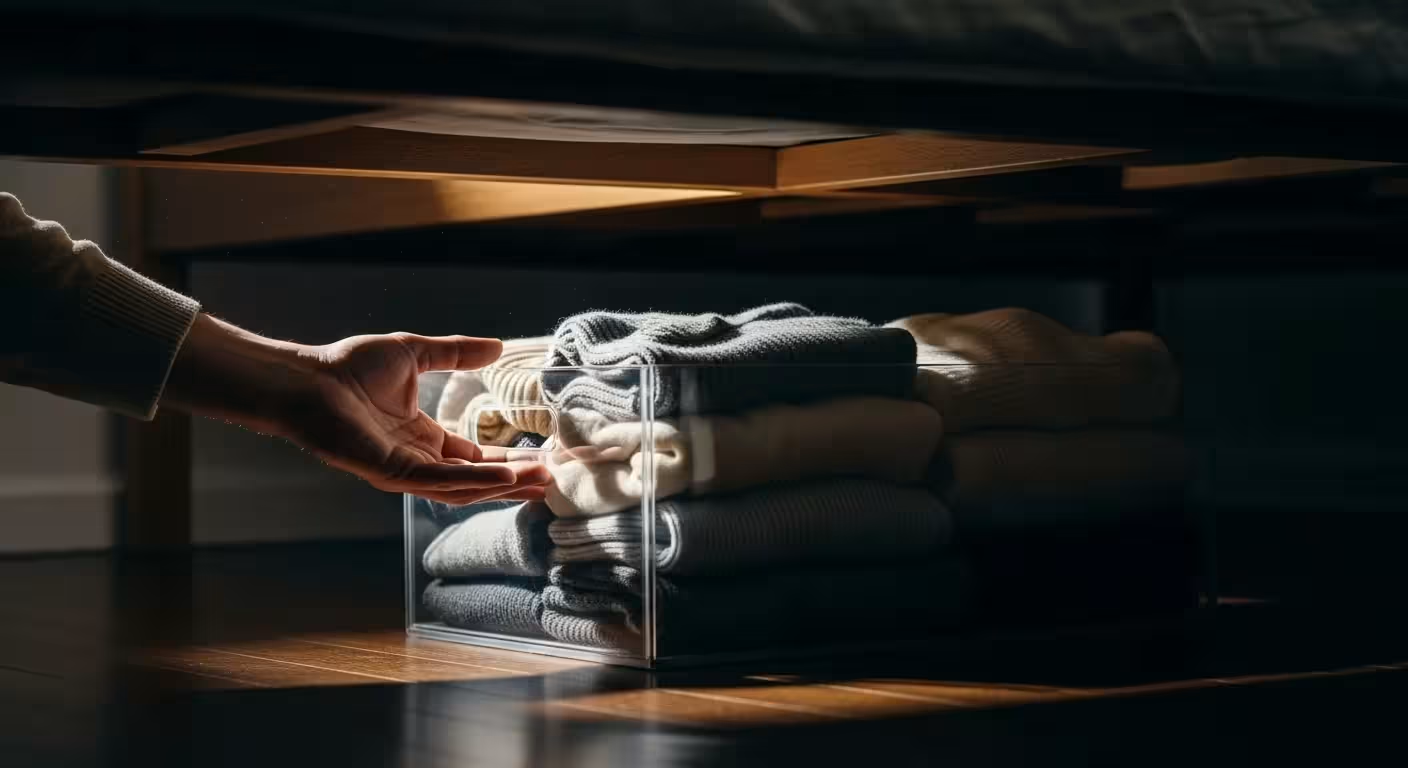
Choosing Your Storage Sanctuary: Location, Location, Location
Once your clothes are sorted and sparkling clean, the next step is to find them a safe home for their off-season slumber. The environment where you store your clothes is just as important as the container you put them in. The ideal storage location has four key characteristics: it must be Cool, Dark, Dry, and Clean. This combination of factors prevents mildew growth, stops sunlight from fading colors, discourages pests, and protects fabrics from heat damage.
Best Places for Clothing Storage
Finding the perfect spot in your home can be a treasure hunt. Think about unused spaces that meet our four criteria. Some of the best options include:
Under the bed: This is prime real estate for off-season storage. It’s typically dark, temperature-stable, and out of the way. Use long, shallow containers with lids, often designed with wheels for easy access. A typical under-bed box might be around 34 inches long by 18 inches wide and 6 inches tall, perfect for folded sweaters, jeans, and t-shirts.
Top shelves of a closet: The high shelves in a bedroom or hall closet are excellent choices. They are protected from light and dust, and the temperature is consistent with the rest of your home. Just be mindful of safety; don’t store overly heavy bins up high if lifting is a challenge.
A guest room closet: If you have a spare room, its closet is a fantastic storage zone. Since it’s not accessed daily, it provides a stable, undisturbed environment for your garments to rest.
Cedar chests: A classic for a reason! A well-maintained cedar chest naturally repels moths and imparts a pleasant scent. However, ensure the wood oils don’t directly touch delicate fabrics by lining the chest with acid-free paper or placing clothes in breathable cotton bags first.
Places to Avoid and Why
Just as important as knowing where to store clothes is knowing where not to. Storing your items in the wrong environment can cause irreversible damage. Steer clear of these common problem areas:
Unfinished basements and garages: These areas are often prone to high humidity, which is a recipe for mildew and musty odors. They also experience wide temperature swings and are more accessible to pests like rodents and insects.
Attics: While they might seem like a great empty space, attics can experience extreme heat in the summer. This intense heat can bake in hidden stains, cause yellowing in white fabrics, and degrade elastic fibers in clothing, leaving them brittle and stretched out.
Cardboard boxes: It’s a common mistake, but cardboard is not your friend for long-term clothing storage. The material is acidic and can discolor fabrics over time. Furthermore, the glue used in cardboard can attract pests, and the boxes themselves absorb moisture from the air.
Plastic dry-cleaning bags: Never store clothing in the thin plastic bags from the dry cleaner. They are meant for short-term transport only. These bags trap moisture, which can lead to yellowing and mildew, and the plastic can degrade over time, sticking to and damaging the fabric.

















